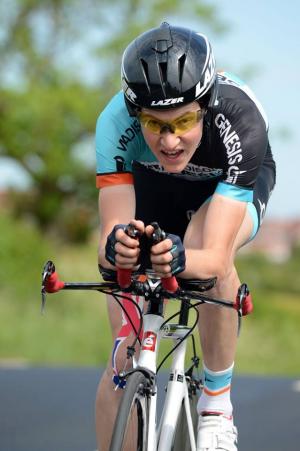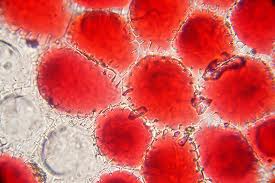Main Menu
Latest Blog Entry
User login
Exercise Physiology: Understanding the athlete within
“The performance of elite athletes is likely to defy the types of easy explanations sought by scientific reductionism.” (1)
 The weak chink in my coaching armour (or the weakest link amongst many) is my exercise physiology knowledge. Having studied Italian at school instead of biology, I avoided Exercise Physiology subjects when doing my MSc.
The weak chink in my coaching armour (or the weakest link amongst many) is my exercise physiology knowledge. Having studied Italian at school instead of biology, I avoided Exercise Physiology subjects when doing my MSc.
My coaching has been mainly with team sport or combat athletes and I have never felt the need to know more than the basics of physiology.
However, when this course came up on Coursera, I took the opportunity to rectify this and see if I could help my current crop of athletes that include cyclists, modern pentathletes, marathoners and 1500m runners.
Course outline
Mark Hargreaves of Melbourne University set up the course with the aim that at the end of the course I would be able to:
•describe the sequence of events in muscle contraction, the characteristics of skeletal muscle fibre types, their recruitment during exercise and relevance to athletic performance, the sites of energy use during muscle contraction and the specific muscle adaptations to different types of exercise.
• summarise the energy systems utilized during exercise of varying intensity and duration and understand the factors that influence carbohydrate and fat metabolism during exercise.
• describe the cardiorespiratory responses to exercise that facilitate oxygen delivery to, and consumption by, contracting skeletal muscle during exercise and summarise the physiological determinants of maximal oxygen uptake.
• understand the mechanisms of heat loss during exercise and their physiological implications, the effect of heat stress on physiological and metabolic responses to exercise and effective countermeasures, the effects of fluid loss on physiological function and the benefits of fluid replacement during exercise.
• describe the central and peripheral factors that mediate fatigue during exercise of varying intensity and duration and the physiological determinants of sprinting and endurance performance.
• appreciate the potential role of genetic factors in mediating exercise performance and responses to exercise training.
There was a good mix of video lectures and journal articles to read. A pdf study guide also summarised the week’s learning with a very handy glossary. The 6 week course was punctuated by fortnightly quizzes, which counted towards the final mark.
 A written assignment based on a case study of a collapsed Iron Man triathlete just before the finish line was peer reviewed. This has caused some consternation from other students as the marking has appeared a bit random.
A written assignment based on a case study of a collapsed Iron Man triathlete just before the finish line was peer reviewed. This has caused some consternation from other students as the marking has appeared a bit random.
I got 18/20 on this section (I was tempted to write that he probably collapsed from boredom having listened to his fellow triathletes talk about their training…).
The final exam was 25 multiple choice questions, some of which were quite tough.
Key lessons
The relationship between exercise duration and intensity is responsible for what energy substrates are used. An increase in ambient temperature also has an impact, with more carbohydrate being used.
Repeated sessions in the heat leads to Carbohydrate depletion. However, the major cause of fatigue in the heat is the rise of core body temperature above 38C. This impedes blood flow and together with a fall in blood pressure, impedes the ability of the cv system to function as effectively.
Delaying or limiting the rise in core temperature can therefore improve performance in the heat: acclimatisation, pre-cooling and fluid ingestion being the three main ways.
The relationship between local and central fatigue was covered in some depth. Referring to Tim Noakes’ Central Governor Theory, I understood it more now than I did 15 years ago when I first saw him present on it.
Fatigue could be “mind over muscle” with the mind protecting the body from damaging itself. However, experience, emotions and motivation can all influence this relationship.
A couple of definitions also helped me clarify my thoughts:
“Fatigue is a reduction in force and poer generating capacity”.
“Fatigue is an inability to maintain the required or expected force or power output.” (Task failure).
The diaphragm appears to be a clever piece of human kit. As a major part of our respiratory system, it works hard during maximal exercise (up to 15% of VO2 is used by it. When it fatigues a reflex signal occurs to the working muscles which limits motor activation.
The sporting champion will come from a genetic pool of elite athletes. But, they need to work hard and maximise opportunities given to them in order to prevail.
Summary and thoughts
 The course went into some detail about the cellular actions and I am doubtful as to whether knowing that GLUT4 is a glucose transport protein will help me or my athletes.
The course went into some detail about the cellular actions and I am doubtful as to whether knowing that GLUT4 is a glucose transport protein will help me or my athletes.
The cellular physiology was hard work for me, and I doubt if I will remember the details in a month’s time.
I am struggling to think of one change to my coaching practice that I will make as a result of this course.
I gained lots of information, but little wisdom. The knowledge may impact on what I do in the future. It may have helped me understand the theory underpinning my exisitng practice. I return to the opening quote: being a coach means there is more to performance than what happens in the cells.
Saying that, the quality of the information, the design of the course and how it was structured mean that it did what it said on the tin. I will be able to use a lot of this information on the coaching courses I deliver.
Thanks to Professor Hargreaves and his team for setting it up.
If you want some other ideas for courses see Anatomy and Physiology courses
This was my 5th MOOC following:
- Crash Course in Creativity
- Data Visualisation and Infographics
- How Things Work
- Inspiring Leadership Through Emnotional Intelligence
Next up: “From the Big Bang to Dark Energy” (way out of my confort zone).
References
1 Joyner, M, Coyle F. The Journal of Physiology Volume 586, Issue 1, pages 35–44, January 2008
Client Testimonials
I feel that training with South West Talent and James Marshall has been the best thing I've done for my basketball career so far. It has greatly improved my overall athleticism which has been a real benefit to me when on court. More importantly, however, the training has enabled me to continue playing whilst suffering from a back injury which has caused me real problems over a number of years. It has made huge improvements more recently and I am confident that I will be in good shape to play this coming season.
More


Comments
[…] Exercise physiology: understanding the athlete within […]
[…] courses running for 4-6 weeks and more. I recently did the Exercise Physiology course (review here) which was very in […]